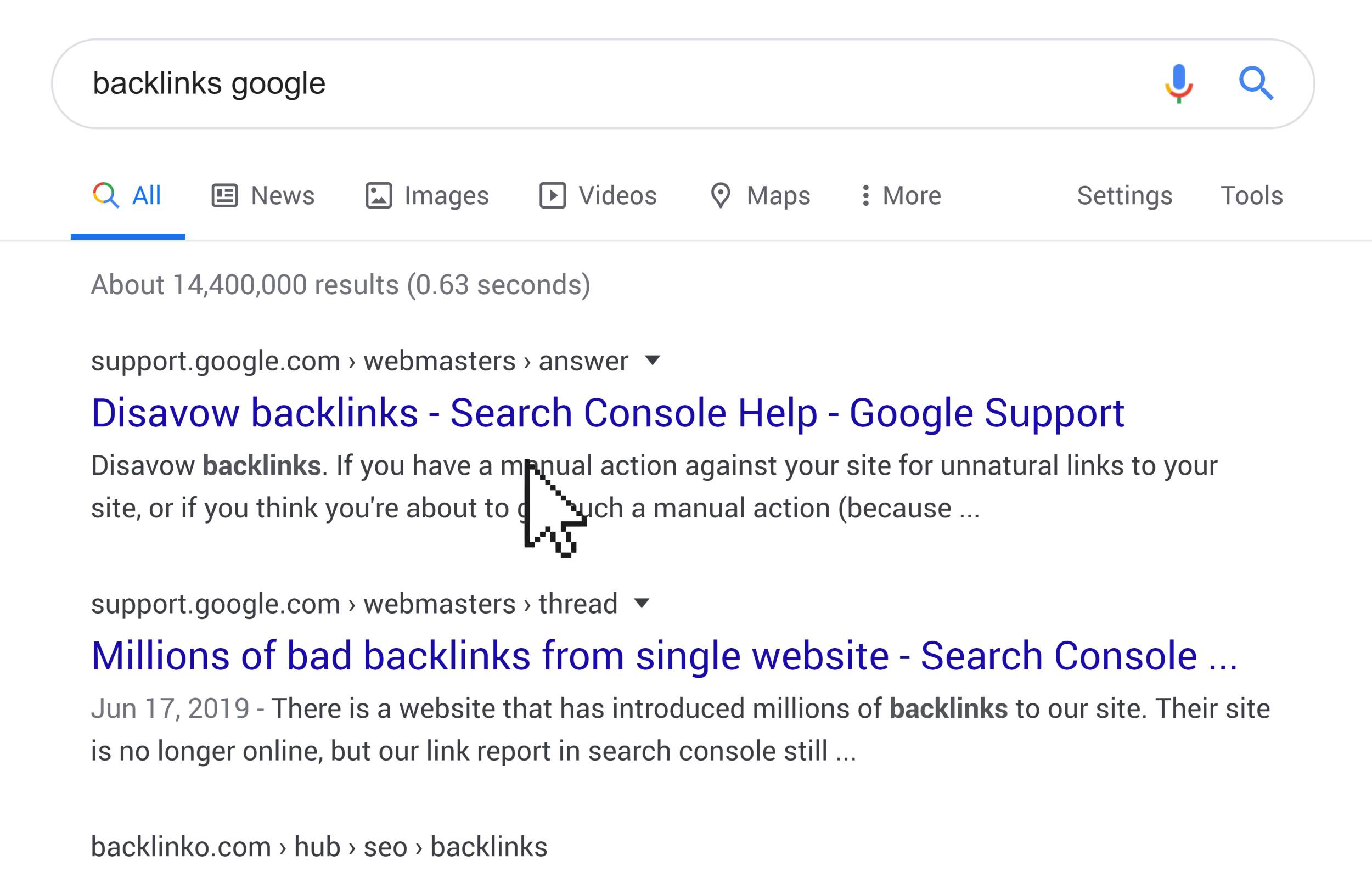17 Untapped Ways to Find New Content Ideas
Written by Brian Dean

Today I’m going to show you 17 little-known ways to find GREAT content ideas.
In fact, finding untapped content topics is one of the main reasons that my blog now brings in 519,977 visits per month:

So if you want to come up with content topic ideas for blog posts, YouTube videos and podcasts, this list is for you.
- 1. Use Google Image Tags
- 2. Facebook Ad Library
- 3. The Reddit Keyword Research Tool
- 4. Best By Links Reports
- 5. The Exploding Topics Tool
- 6. Scan Blog Comments
- 7. Competitor’s YouTube Channels
- 8. Product Hunt
- 9. Google Analytics Landing Pages Report
- 10. The Content Relaunch
- 11. Create Yearly Guides
- 12. Content Swipe File
- 13. Google’s Searches Related To
- 14. Find Super Low-Competition Keywords
- 15. A/B Rankings Keyword Questions Tool
- 16. Podcast Titles and Descriptions
- 17. Conference Talks
- Bonus: Pinterest Suggest
1. Use Google Image Tags
Here’s how this strategy works:
First, type a broad topic idea into Google Images.

Then, take a look at the tags that Google suggests:

These tags are terms that Google considers VERY closely related to what you just typed in.
So all you need to do is combine the tag with the keyword that you searched for.
For example, take the term “Paleo Diet”.
You can use Google Image tags to come up with topics like “Paleo diet meal plan”, “Paleo Diet breakfast” and more.

Bonus Tip: Click on the arrow to see dozens of additional content topic ideas.
2. Facebook Ad Library
The Facebook Ad Library is an untapped source of PROVEN content ideas.

To use it, search for a Facebook page in your niche.
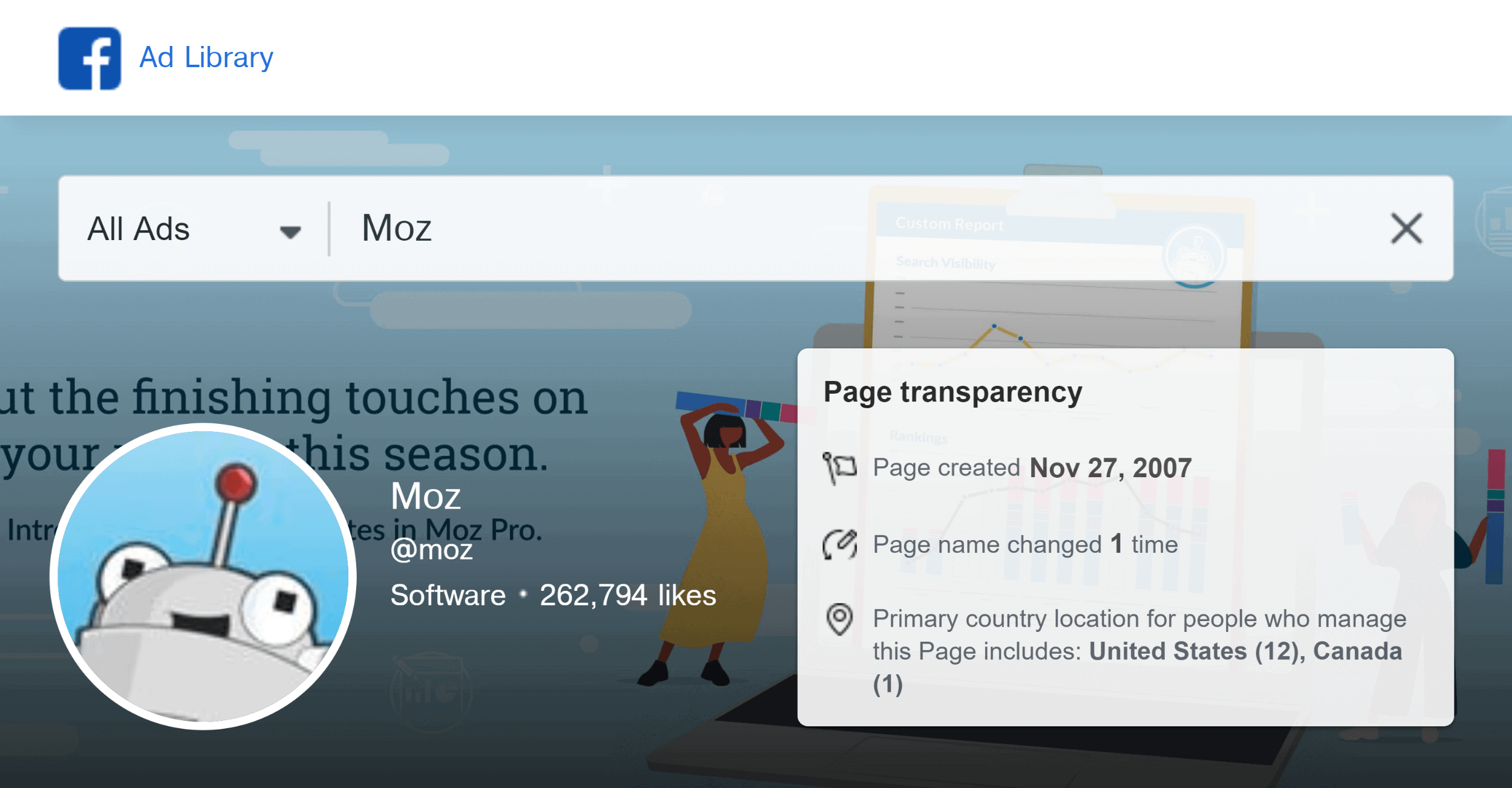
And you’ll see all of the ads that they’re running.

A lot of these will be traditional ads that send people to squeeze pages.
That’s not what we want.
Instead, keep an eye out for Facebook boosted posts that are promoting a specific piece of content that they’ve published.

Why is this important?
Well, if someone’s paying to promote a piece of content, it’s probably performing well for them.
Plus, you get to see the exact words and phrases that they use to promote their post.

(This will come in handy when you start to promote your content.)
3. The Reddit Keyword Research Tool
This little tool is quickly becoming one of my favorite ways to find new content ideas.
That’s because, unlike most keyword research tools, The Reddit Keyword Research Tool doesn’t take a seed keyword and spit out a bunch of suggestions.
Instead, this tool shows you hot topics that people are talking about on Reddit.
All you need to do is pop a subreddit into the tool.

And you’ll get a list of keywords that people are talking about on that specific subreddit.

The best part?
The tool even pulls monthly search volume data from the Google Keyword Planner:

Nice!
4. Best By Links Reports
If you’re like me, some of your blog content is designed 100% to get backlinks.
The question is:
How do you know if your content will be something that people actually link to?
The “Best By Links” Report.
Semrush and most other major SEO tools have this report.
And they all work the same way:
They show you pages on a site that people have linked to the most.
For example, a while back I was looking at Moz’s best by links report.

And I noticed something:
One of their all-time best pages in terms of backlinks was an annual Google ranking factors study:

So I decided to apply The Skyscraper Technique to this proven piece of content.
The result was this analysis of 1M Google search results.

And because I based that post off of a proven link magnet, that single page has racked up links from 3.6K domains:
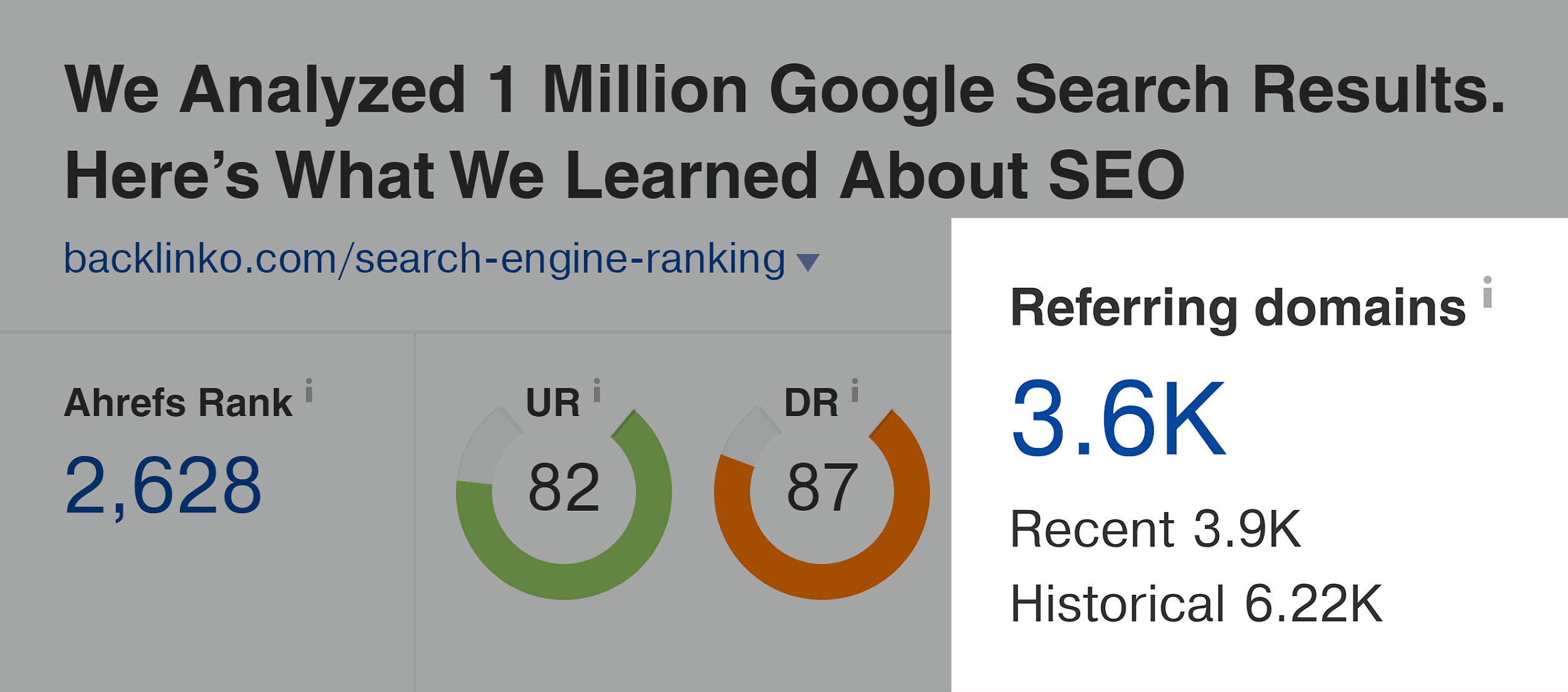
5. The Exploding Topics Tool
One of the best ways to find content topic ideas is to focus on NEW topics.
Why?
It’s simple:
New topics aren’t super competitive (yet).
So when you’re the first to create a post on something new, you get a HUGE “first-mover advantage”.
For example, I was one of the first to publish a comprehensive guide to voice search.
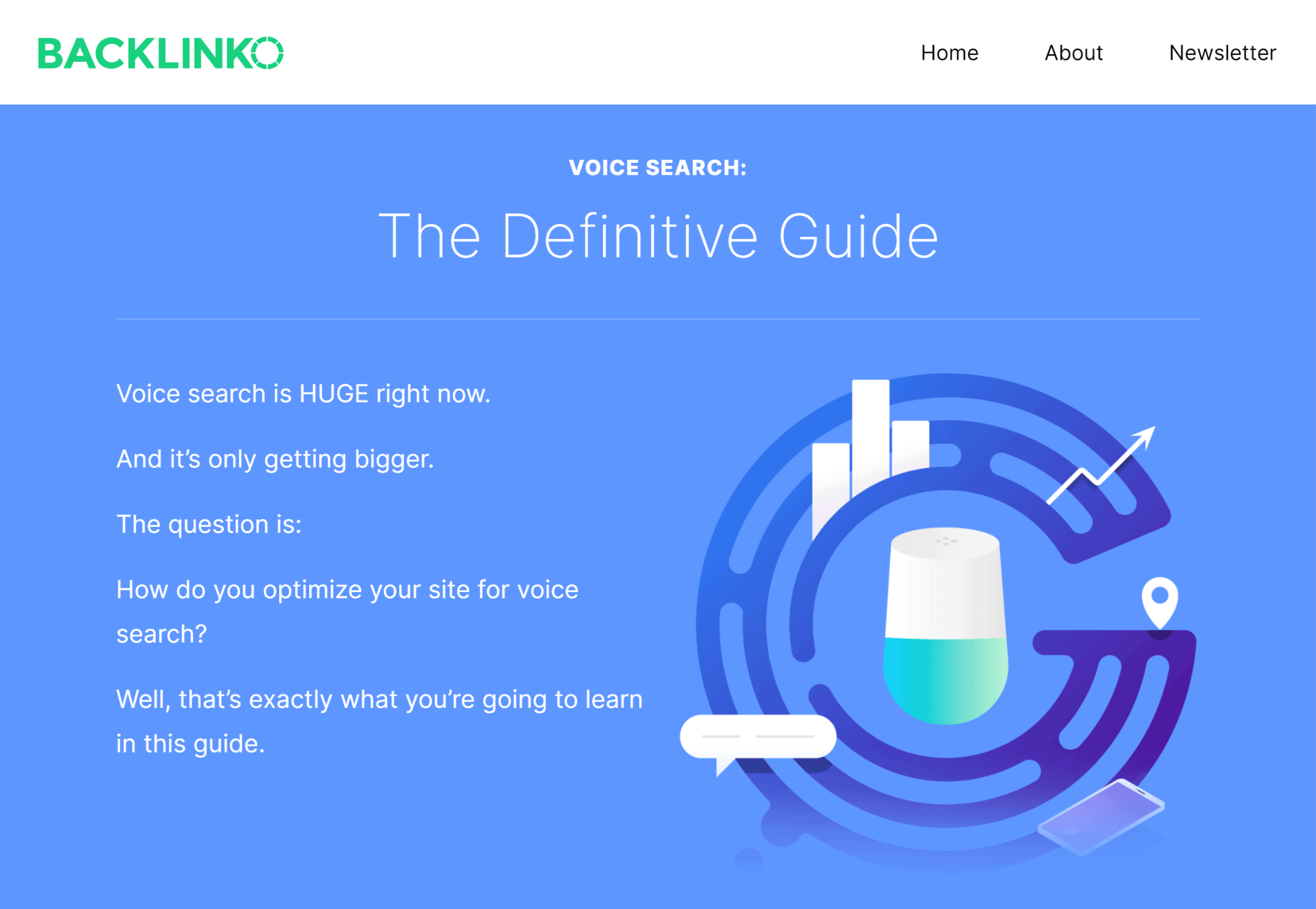
And because I got in early, my post was shared like crazy.
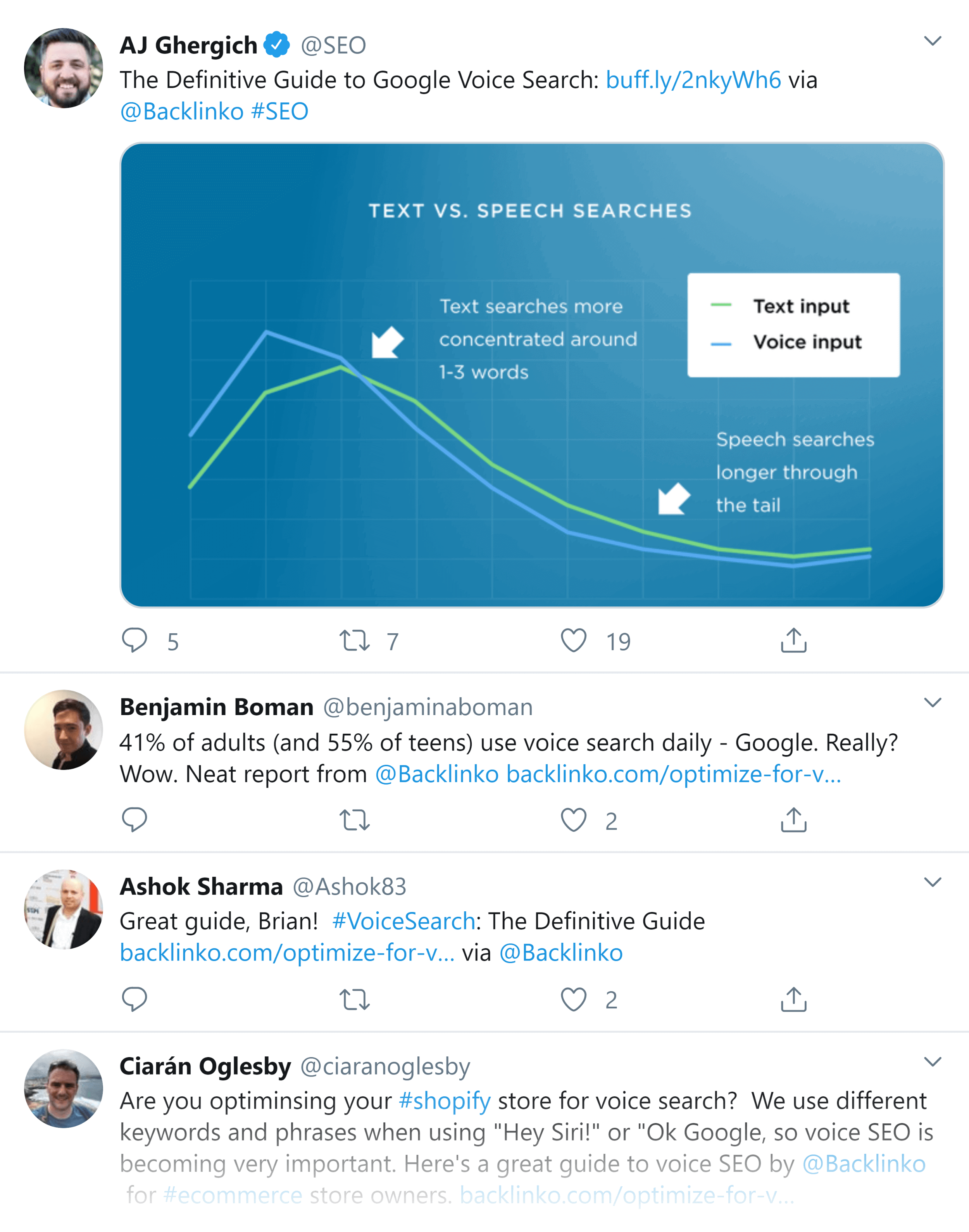
And it quickly racked up lots of links and mentions:

The question is:
How do you consistently find new topics?
Exploding Topics is a free tool that scans the web for topics that are getting more and more popular.

And if you want to find topics for your specific niche, you can sort the list of topics by categories, like tech, fitness and more.

In fact, I recently used Exploding Topics to find a GREAT trending keyword: Ubersuggest.

Considering that this keyword was growing fast, I decided to whip up a quick post and add it to the SEO Marketing Hub.

And because that topic (and keyword) aren’t super competitive yet, I hit the first page within about a week.

Pretty cool.
6. Scan Blog Comments
Blog comments are a content idea goldmine.
For example, people had been asking me for a guide to local SEO for YEARS.
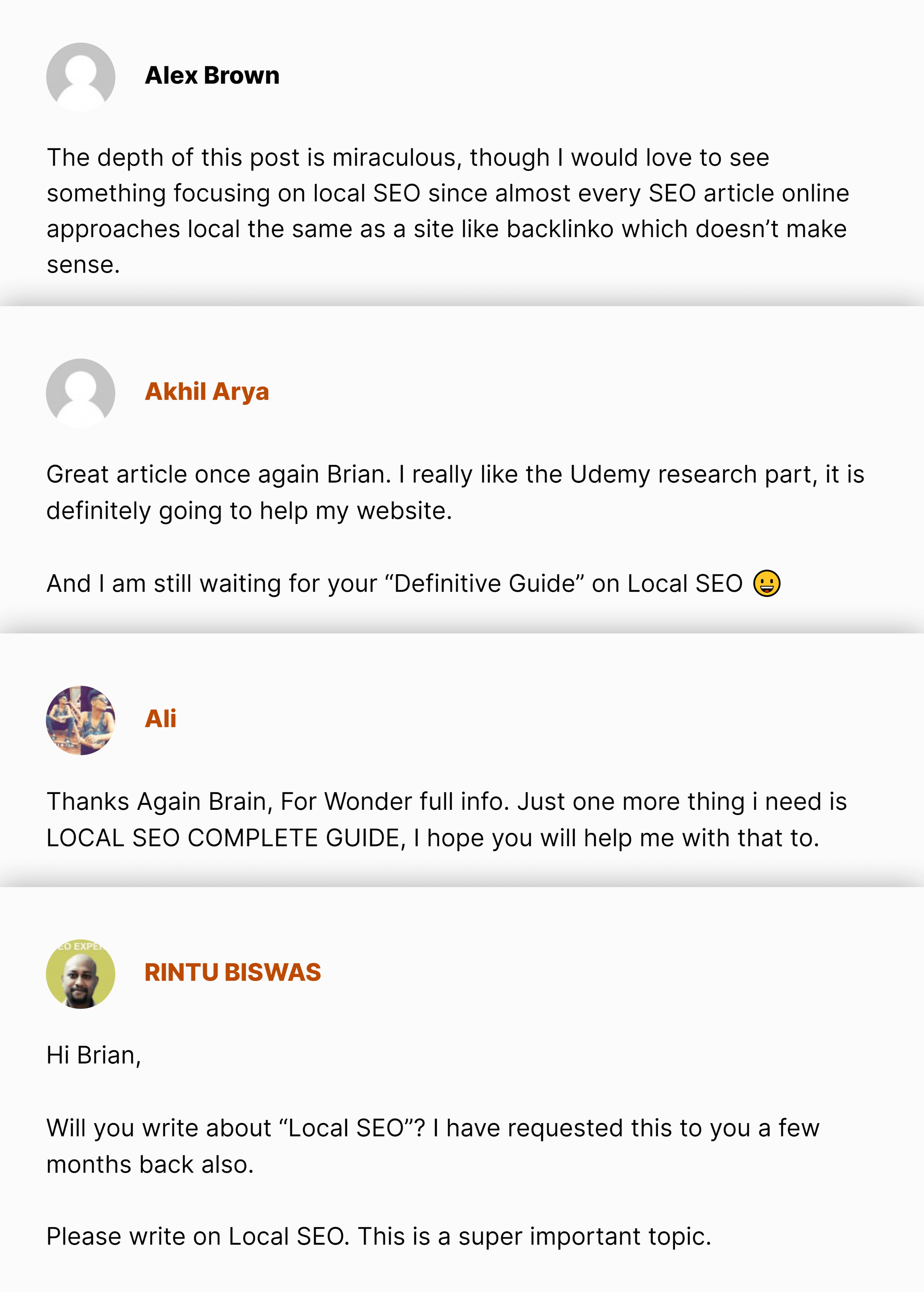
In terms of traditional keyword research, the keyword “local SEO” isn’t that great. It only gets about 5k searches per month. And it’s pretty competitive.

But it seemed like any time I published ANYTHING, someone would ask for a post about local SEO.

This was a sign that, even though the keyword may not be perfect, my audience demanded something about local SEO.
(That’s the great thing about using comments from your blog: you already KNOW that your audience is going to love the content you put out there. They’re literally asking you to write about that exact topic.)
So it was time to deliver.
Sure enough, once I actually got around to publishing that post, people LOVED it.

Obviously, this strategy works best with comments on your own blog. But you can also use this approach on a competitor’s blog.
For example, I usually spend some time looking at the comments section on other popular SEO blogs. And every now and again I come across a really good topic idea.
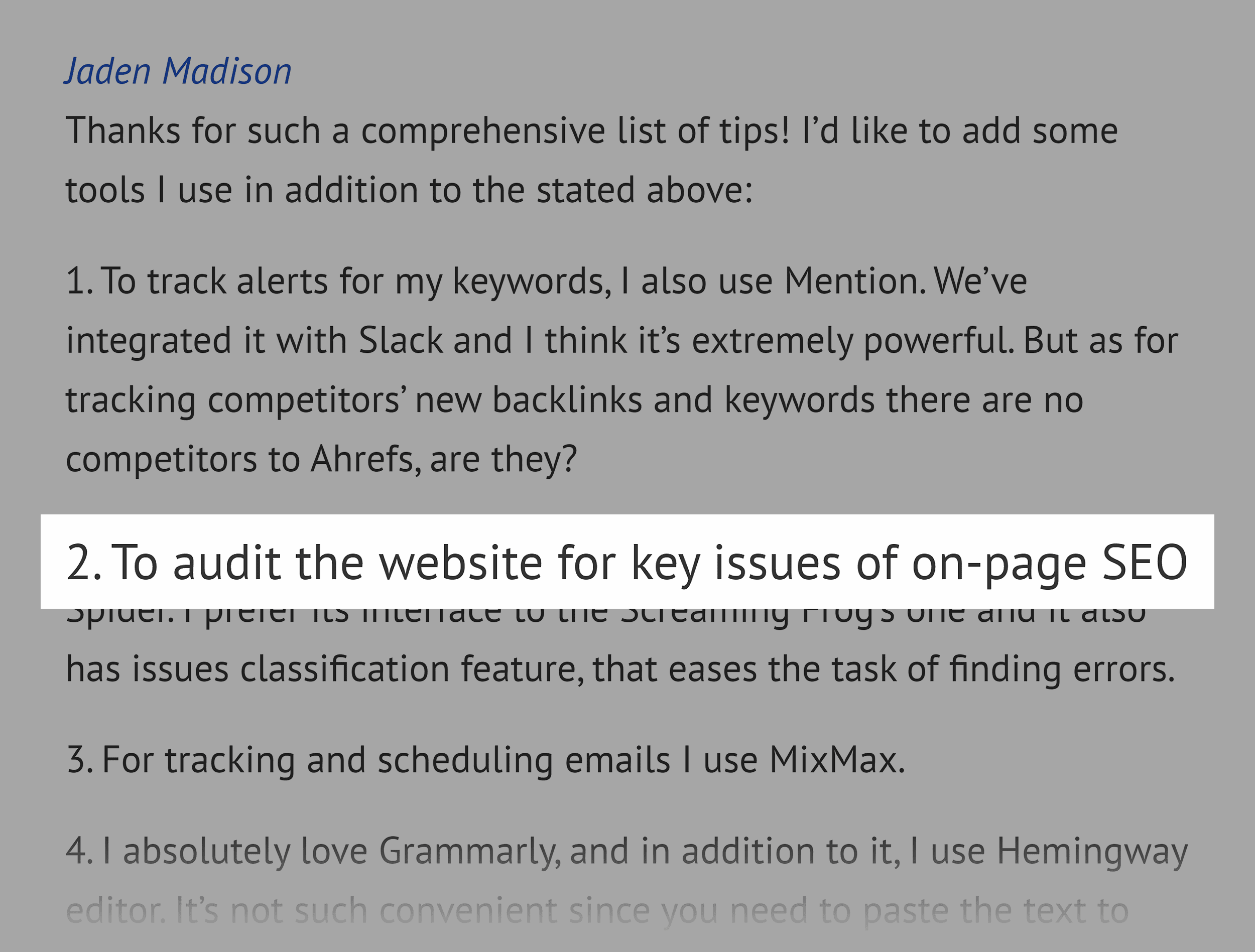
7. Competitor’s YouTube Channels
This technique couldn’t be easier.
First, head over to a competitor’s YouTube channel.

Then, sort their videos by “Most popular”.

And you’ll see their all-time best videos in terms of views.
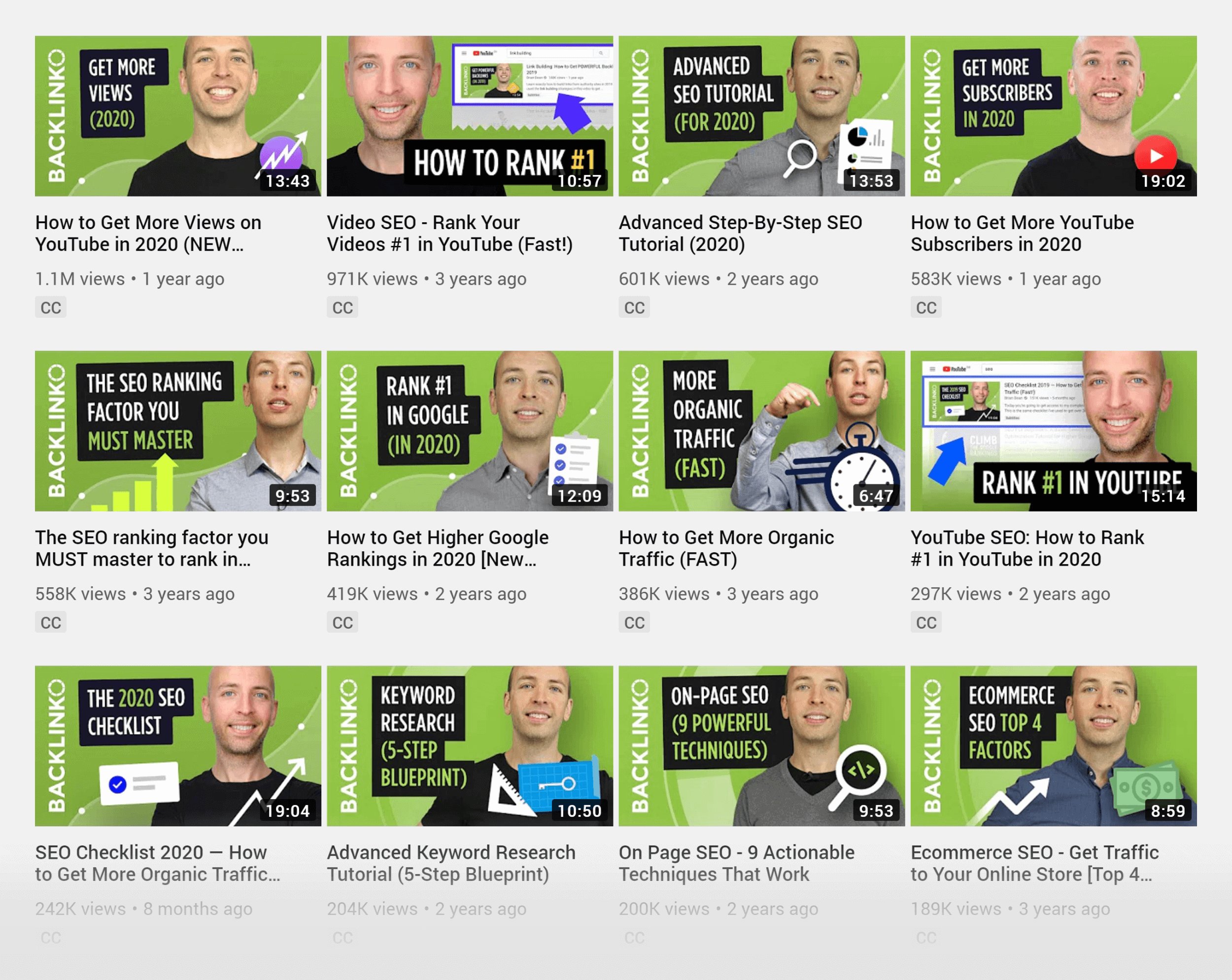
I recommend heading over to a few competitors’ channels to see what’s doing well for them.
As an example, if you’re in the fitness space, the Fitness Blender channel would be a great channel to keep an eye on.
You can either sort by their most popular all-time videos.

Or just take a look at what topics have been working best for them over the last few months.

Obviously, this strategy works best for finding topics for YouTube videos. But you can also use it to come up with topic ideas for blog posts, infographics, podcasts… or any other type of content that you create.
This leads us to…
8. Product Hunt
How do you get new topic ideas from Product Hunt?
First, I recommend checking out the products that win Product of the day, week or month awards.

I’m not recommending that you create content about these specific products (although you can).
Instead, these products tell you problems that people are looking to solve. And niches that are rapidly growing.
For example, I’ve noticed that team collaboration tools are doing really well right now on PH.

So you could create a post that lists out the 20 most popular team collaboration software tools on the market. Or do a showdown like “Slack vs. Hipchat”.
Second, PH has a growing forum called “Ask” where people ask questions about tech, working online and more.
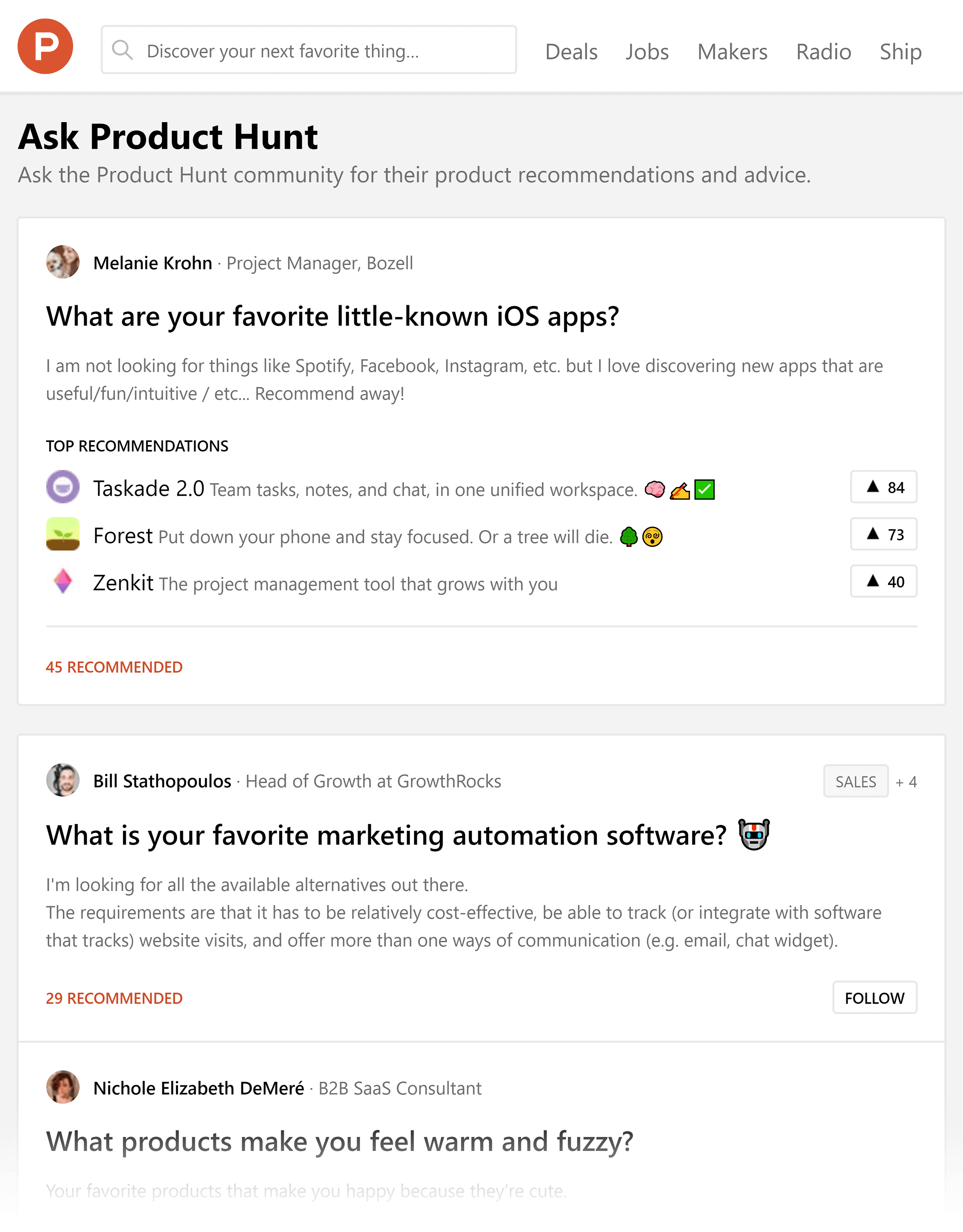
9. Google Analytics Landing Pages Report
This is a great way to scale up what’s already working for your blog.
To be clear:
This technique only works if your site has some traffic coming in. But if your blog generates even a little bit of traffic, you can use Google Analytics to come up with ideas for topics.
All you need to do is head over to your Google Analytics “landing pages” report.
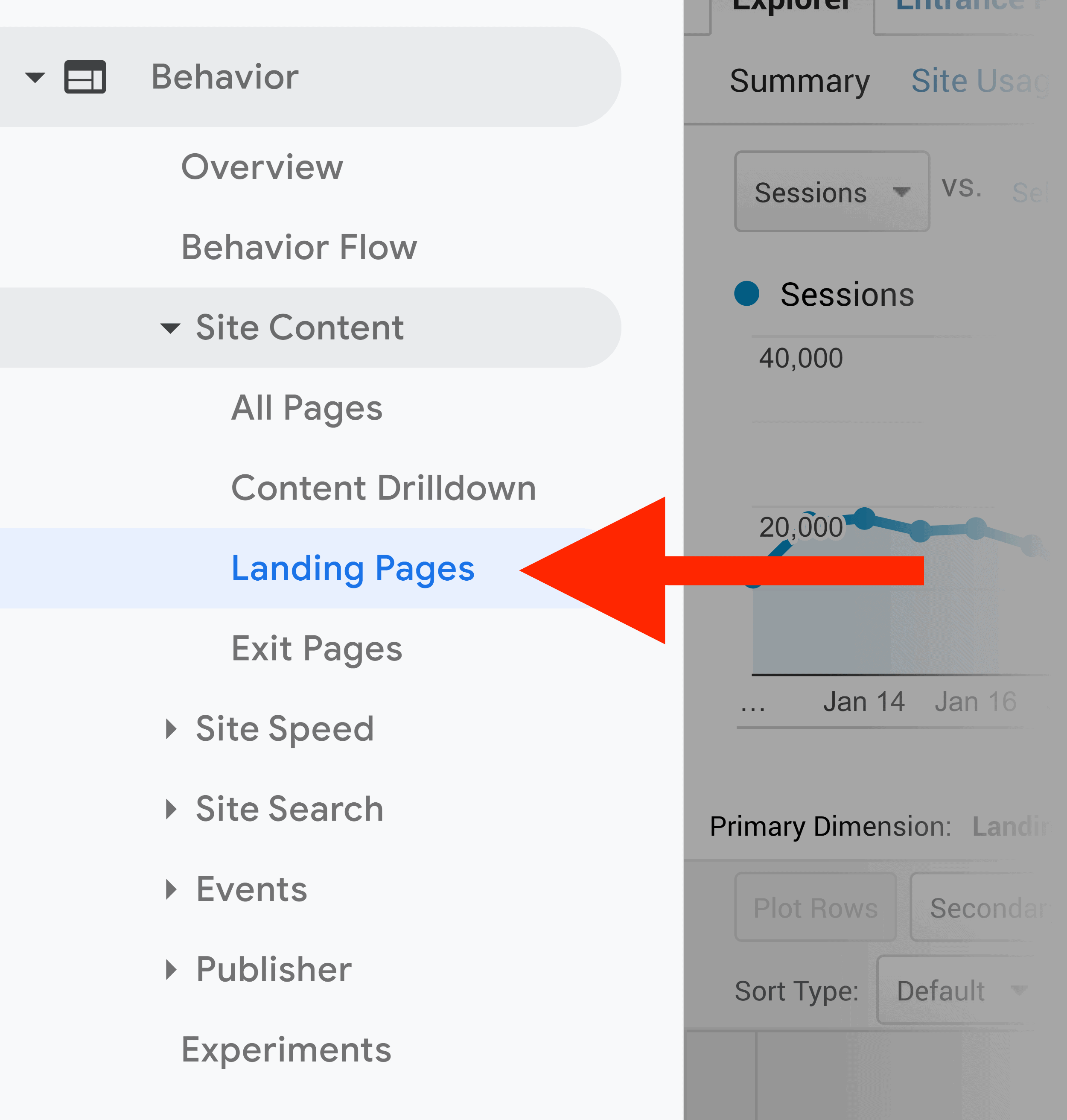
This shows you pages that are driving traffic to your website.

You can use this data to figure out what’s working in terms of:
- Content topics
- Content formats (list posts, case studies, etc.)
- Authors (for multi-author blogs)
- Promotional strategies
- SEO
- Writing style
- Visuals, charts, and embedded videos
Then, double down on what’s working best.
For example, if you look at my landing pages report, you can see that my stuff on YouTube tends to outperform pretty much anything else.
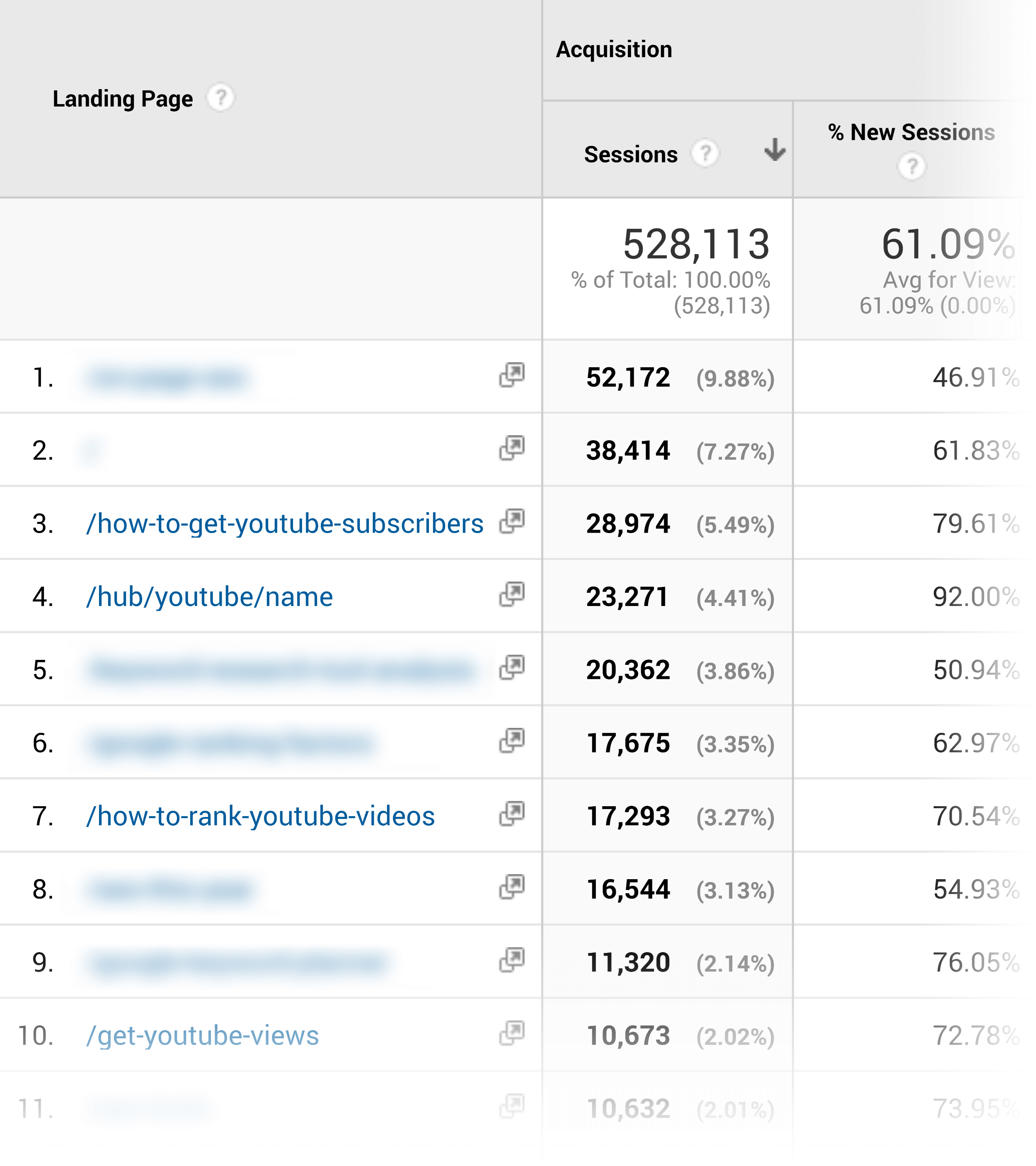
Which tells me that I should put out more content about YouTube marketing.
This is super valuable info to have. BuzzSumo and other tools can tell you what types of content are working best in general.
But they don’t tell you what topics, formats and angles work best for your site and your audience.
That’s why this strategy is so helpful: you can quickly figure out what topics YOU should double down on.
10. The Content Relaunch
If you’re really stuck, your best bet may not be to come up with a new content idea at all.
Instead, relaunch one of your older posts.
(In other words: The Content Relaunch approach)
For example, we recently updated and relaunched our guide to ecommerce SEO.

Even though the core content was more or less the same, the relaunch increased organic traffic to that page by 264.1%.
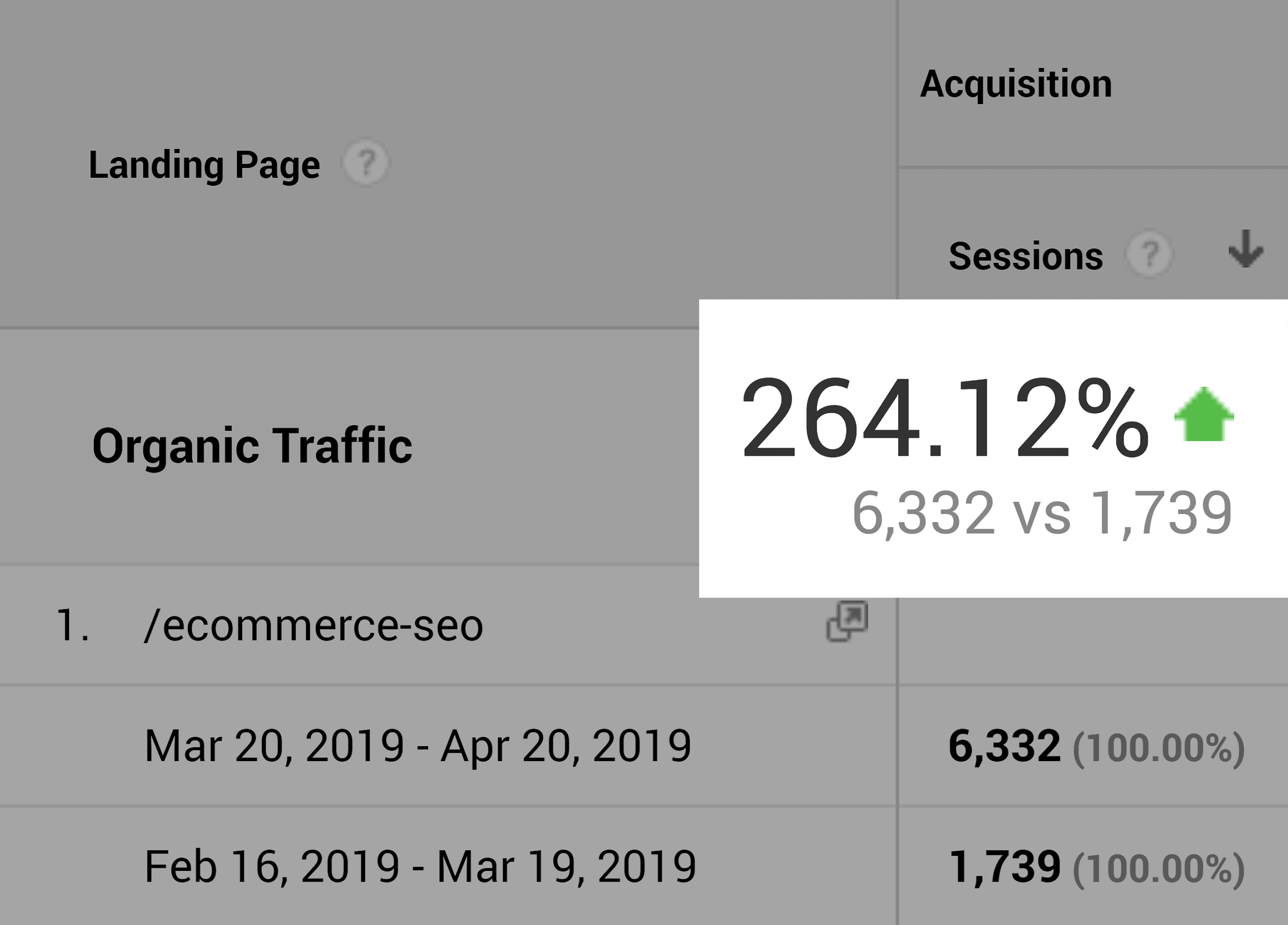
Legit.
Now, if you want to scale this process, you can use a free tool called Animalz Revive.

This shows you articles on your site that have lost the most traffic since you first published them.
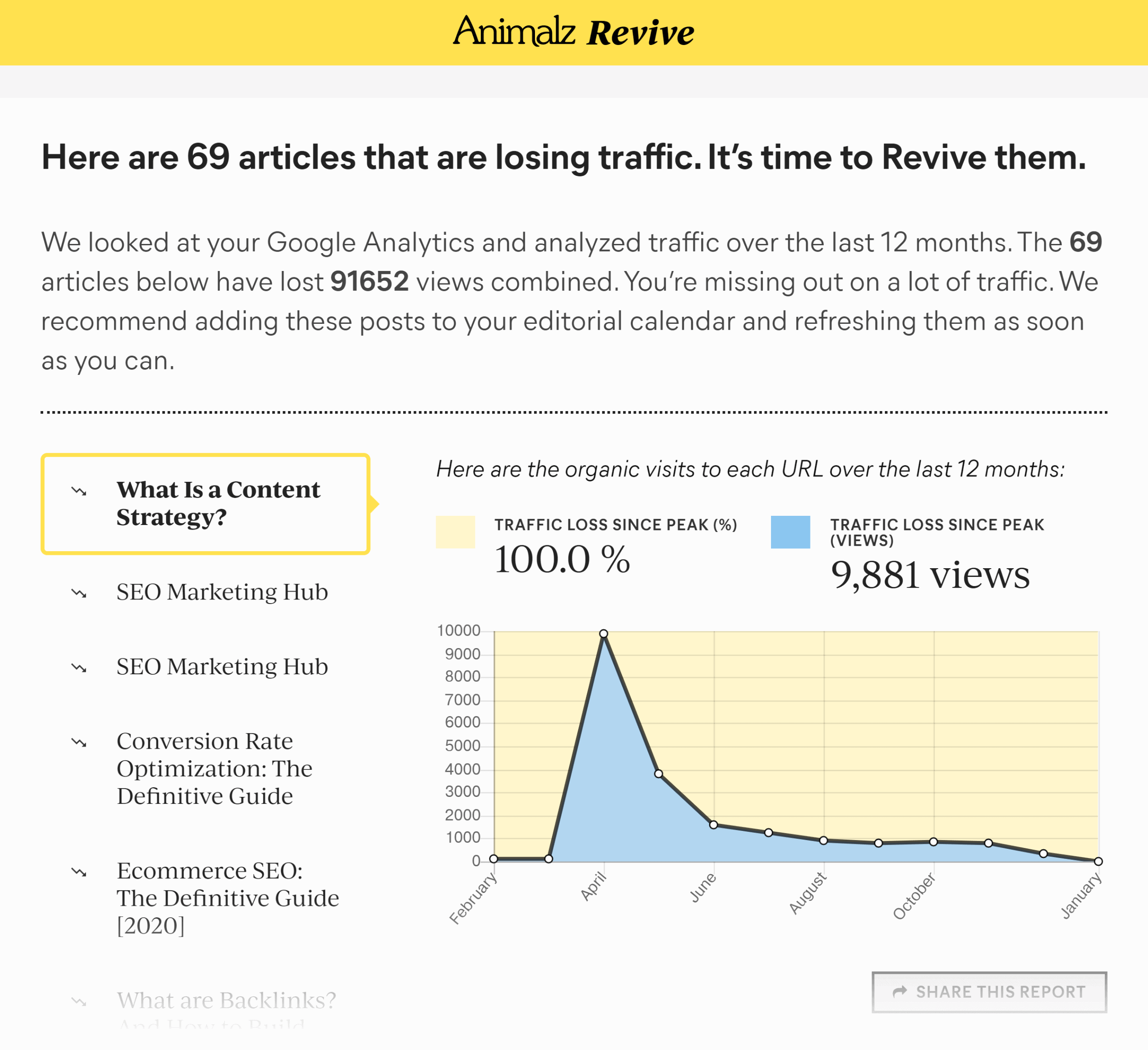
Needless to say, these posts are PERFECT for The Content Relaunch.
11. Create Yearly Guides
If you’re in a competitive niche like I am, most of the keywords that you come across are SUPER competitive.
For example, take the keyword “SEO”.
According to SEMrush, “SEO” has a keyword difficulty score of 73.98%.

Insane!
Well, here’s a sneaky way around this problem…
Instead of creating another blog post on a competitive topic that’s going to get buried in the SERPs, create an annual guide instead.
No, you still won’t rank #1 for a competitive keyword like “SEO”.
But you CAN rank for “keyword + year” versions of that term.
For example, every year I publish a yearly guide to SEO.

Instead of a high-level overview of SEO, I focus on SEO trends that are taking off.

Not only do people love these forward-looking guides…
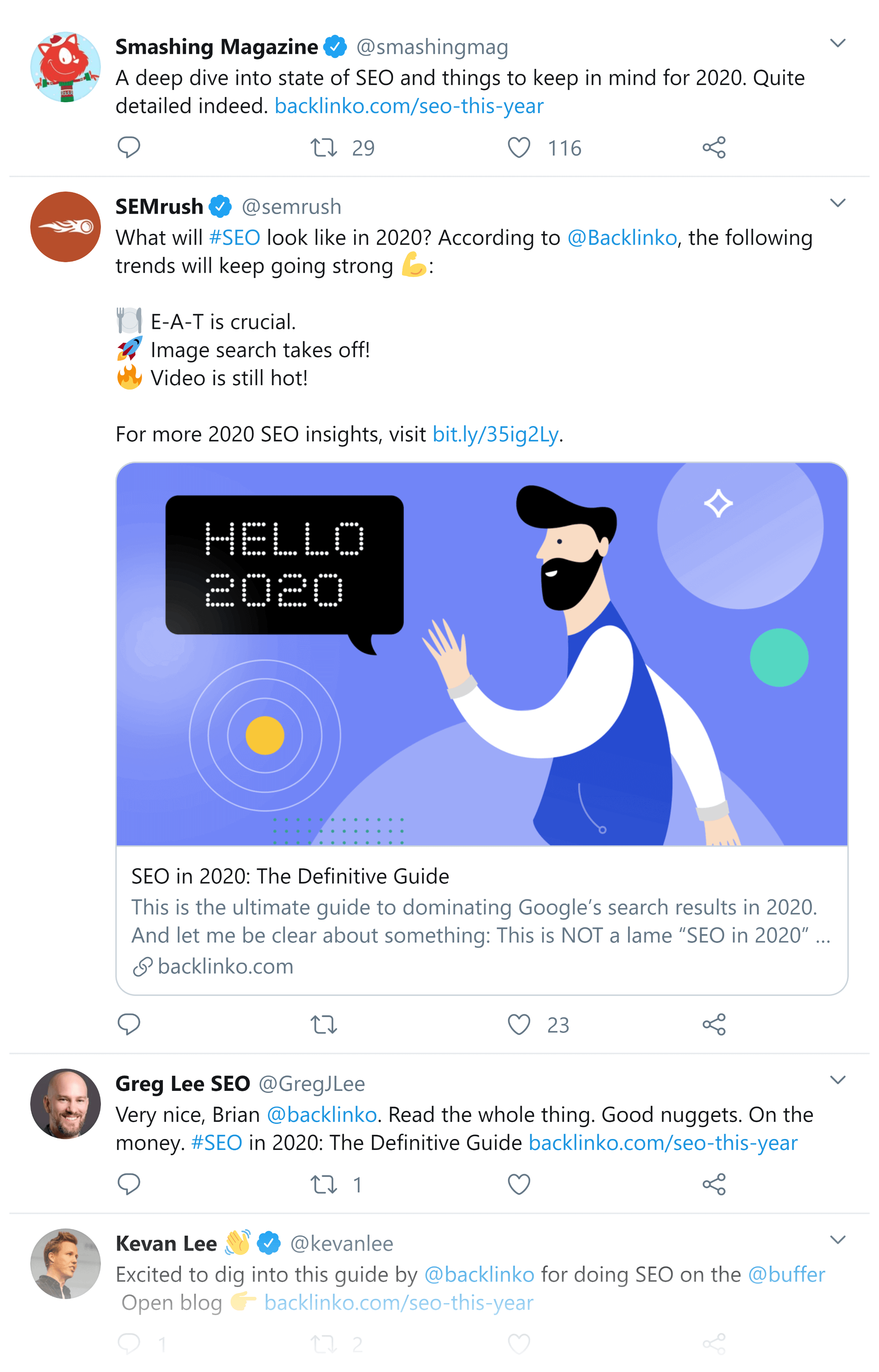
… but they can bring in a lot of traffic.

In fact, this approach works so well that I decided to create a content marketing yearly guide.

This one didn’t do as well as my SEO guide. But it still brought in a fair amount of traffic in its first month.

12. Content Swipe File
A “swipe file” is a collection of content that you find cool, interesting and inspiring.
They don’t even have to be related to what your site is all about.
Sometimes the best inspiration comes from outside of your niche.
For example, the design we used for this guide to becoming an SEO expert came from a design I saw (and saved) on Dribbble.

As another example, the idea for this report we published on our blog was inspired by a report about freelancing from Upwork.

So keep your eyes open for interesting content to add to your swipe file. It will become one of your content team’s most valuable assets.
13. Google’s Searches Related To
This is a great way to find low-competition long tail keywords.
All you need to do is search for a broad topic that you want to write about.

Then, check out the “Searches related to X” area at the bottom of the first page.

And you’ll get a list of topic ideas that come straight from Google.
Pro Tip: Click on one of the suggested search terms. And scroll to the bottom of those results. Then, click on a suggested search from that list.
Rinse and repeat Inception style.
14. Find Super Low-Competition Keywords
This is a strategy that I’ve been using more and more lately.
To use it, reverse engineer a competitor’s top keywords using your favorite keyword research tool.

Then, filter the results so it ONLY shows you terms with a super low competition (I usually go with a keyword difficulty of <20).

Now, here’s a cool little trick that I recently discovered…
As you can see here, most of the low-competition keywords on this list are absolute garbage.

Why? Look at the CPC estimates. Most of these terms have zero commercial intent.
So what I like to do is add another filter that only shows keywords with a CPC >$2.00. That way, the keywords on the list have at least SOME buyer intent.
As you can see, this makes the list of low-competition keywords much better:

15. A/B Rankings Keyword Questions Tool
This nifty little tool scrapes the “People also ask” section of the search results.

That way, you’re getting access to a list of hot questions that people really want to know.
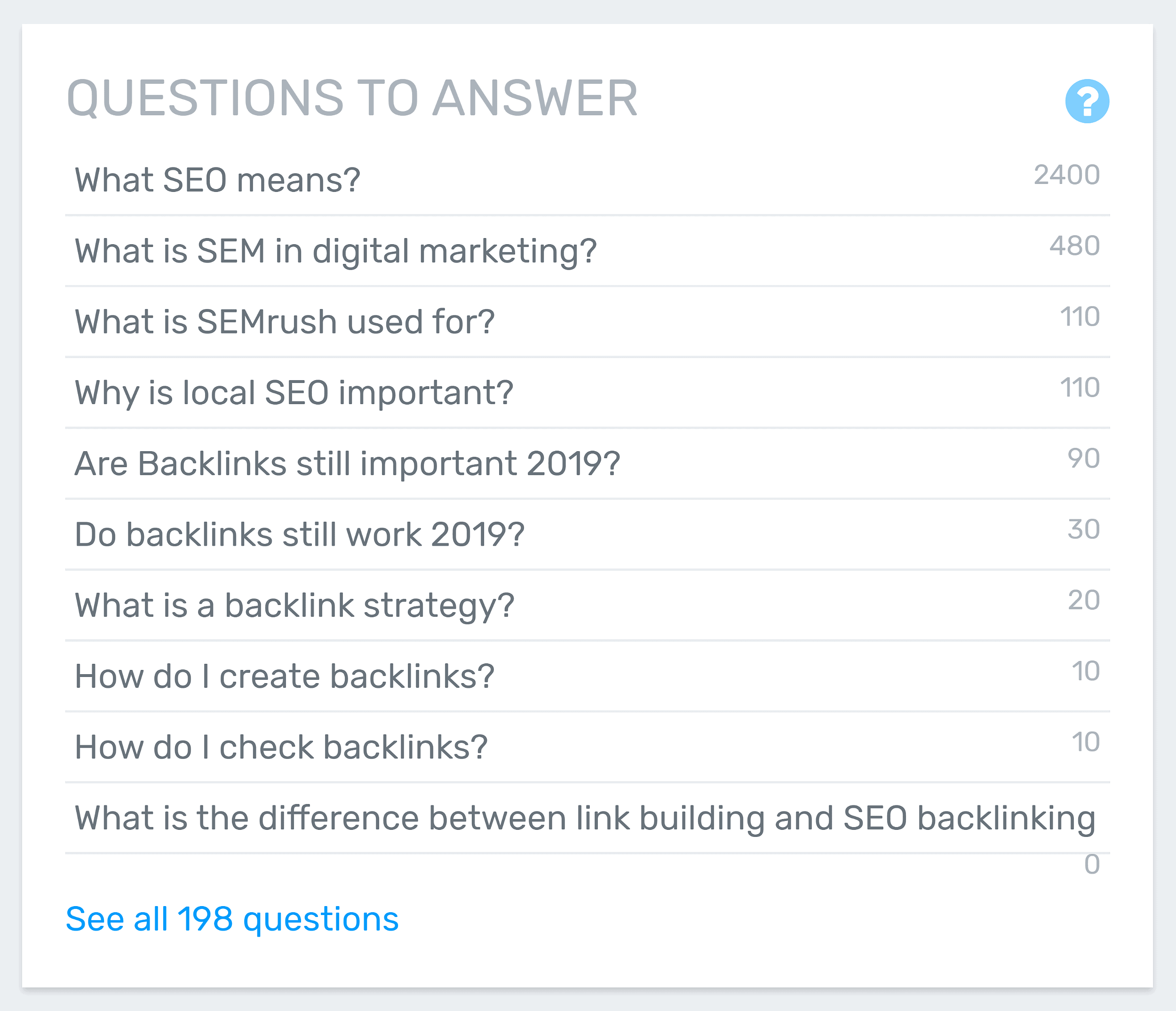
Questions that you can answer with your content.
16. Podcast Titles and Descriptions
Here’s an underrated way to find new content ideas.
First, head over to a podcast in your niche.
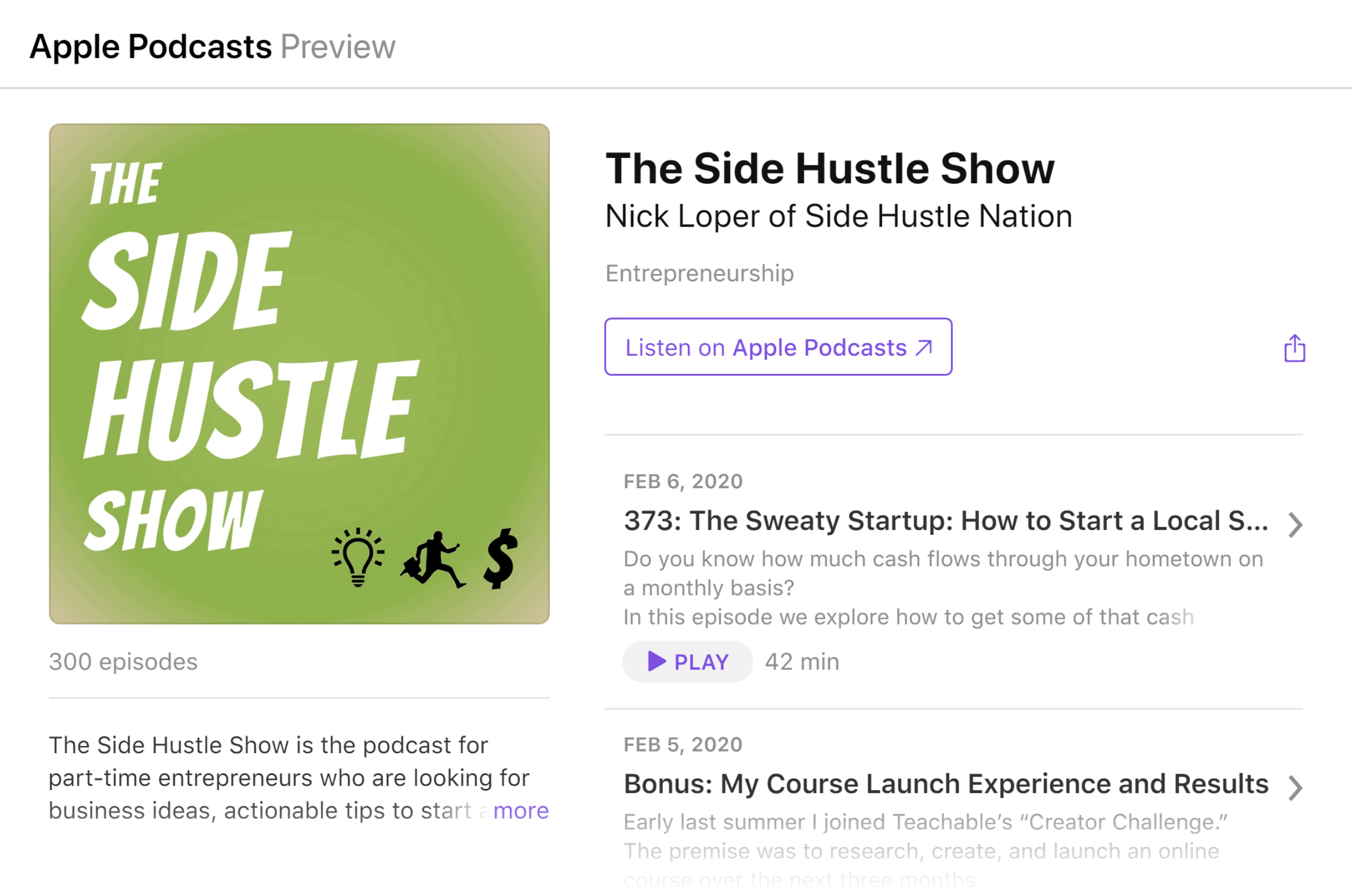
(You can use your phone for this. But I prefer to visit the podcast page on podcasts.apple.com on my desktop).
Then, scan over the episode list.

In about 30 seconds you’ll find yourself with some solid topic ideas.

Very cool.
17. Conference Talks
If you want a fresh set of content ideas that you won’t find in any tool, check out conference agenda pages.
These pages are GREAT because they show you in-demand topics. After all, people are paying for a ticket and flying there just to learn about these topics.
For example, check out this conference agenda page:

I already see 3-4 content topics that could work really well as an infographic or blog post.
Pro Tip: Pop a conference page into Keyword Planner to generate lots of ideas (and get monthly search volume data).

Bonus: Pinterest Suggest
Everyone and their mom knows about using Google Suggest to find long tail keyword ideas.

But Google isn’t the only search engine with a suggested search feature.
In fact, Pinterest is a completely untapped source of suggested keyword ideas.
Pinterest Suggest works exactly the same way as Google Suggest.
Type in a keyword… and get a list of suggestions.

But the cool thing about using Pinterest is that you’ll get a completely different set of content ideas than you’d get from Google.
Nice.
Now I’d Like to Hear From You
There you have it: 17 ways to find new content topic ideas.
Now I’d like to hear what you have to say:
Did you learn any new strategies for finding topic ideas from today’s post?
Or maybe you use a technique that I didn’t mention here.
Either way, let me know by leaving a quick comment below.

